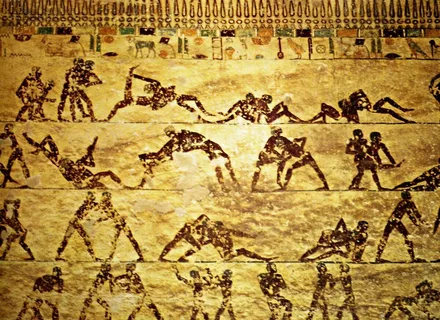Art has been an intrinsic part of human history, capturing stories, emotions, and beliefs for thousands of years. Ancient Artz, a term that broadly encompasses early artistic expressions, gives us a glimpse into the lives and imaginations of our ancestors. These artworks, from the simple cave paintings of prehistoric times to the intricate sculptures of ancient civilizations, reveal much about the cultural, religious, and societal structures of early humanity. In this article, we will explore the fascinating world of ancient art, its significance, and its lasting impact on modern culture.
What is Ancient Artz?

Ancient Artz refers to the various forms of visual art created by ancient civilizations. These artworks often served more than just decorative purposes; they were symbolic representations of spiritual beliefs, political power, and daily life. From the stone carvings of Mesopotamia to the frescoes of ancient Rome, these artistic creations are not only aesthetically remarkable but also provide valuable insights into the cultural and historical contexts in which they were made.
Key Characteristics of Ancient Artz
Ancient art is often defined by its use of natural materials, such as stone, clay, and pigment. These early artists used whatever resources were available to them, whether it was carving into stone, painting on cave walls, or molding clay into figurines. The style and subject matter of these artworks varied greatly depending on the region and era, but common themes often included religion, mythology, warfare, and the natural world.
Some of the earliest forms of ancient artz can be found in the form of cave paintings, which date back over 40,000 years. These paintings, discovered in locations such as France and Spain, depict animals, hunting scenes, and abstract symbols. Their simplicity and raw energy make them some of the most captivating examples of early human expression.
The Evolution of Ancient Artz

As human societies evolved, so did their artistic practices. The transition from hunter-gatherer groups to settled agricultural communities allowed for the development of more complex forms of art. As societies became more structured and hierarchical, art became a tool for showcasing wealth, power, and religious devotion.
Prehistoric Art: The Dawn of Creativity
The earliest form of prehistoric art includes the Upper Paleolithic cave paintings, which offer glimpses into the daily lives and spiritual practices of early humans. In places like the Lascaux Caves in France and the Altamira Caves in Spain, the walls are adorned with paintings of wild animals such as bison, horses, and deer. These animals were likely of great significance to the people who painted them, serving as both food sources and spiritual symbols.
Sculptures, such as the Venus figurines, are another example of prehistoric art. These small stone carvings of women, often with exaggerated features, are believed to represent fertility and the importance of women in early human societies.
Mesopotamian Art: The Birth of Civilization
As one of the first advanced civilizations, Mesopotamia made significant contributions to ancient art. Located between the Tigris and Euphrates Rivers, this region saw the rise of powerful city-states, including Sumer, Akkad, and Babylon. Mesopotamian art was heavily influenced by the religious and political structure of these societies.

One of the most iconic forms of Mesopotamian art is the stele, a stone monument used to commemorate victories or depict important events. The Stele of Hammurabi, which features one of the earliest known sets of laws, is a prime example of how art was used to convey authority and power.
In addition to steles, Mesopotamian temples were often decorated with intricate carvings and statues of gods, kings, and mythical creatures. These works of art served as both religious offerings and political propaganda, reinforcing the divine right of rulers.
Egyptian Art: Immortalizing the Afterlife
Egyptian art is perhaps the most well-known and studied form of ancient art. With a focus on the afterlife and the divine, Egyptian artists created magnificent tombs, statues, and paintings that have fascinated historians and art lovers alike. The Great Pyramids of Giza, built as tombs for the pharaohs, are a testament to the Egyptians’ dedication to their religious beliefs and their desire for immortality.

One of the defining characteristics of Egyptian art is its highly stylized and symbolic nature. Human figures are often depicted in a specific, rigid pose, with the head and legs shown in profile while the torso faces forward. This distinctive style was not due to a lack of skill but rather because it was considered the most respectful and appropriate way to portray important figures.
In addition to monumental structures, Egyptian art includes beautifully detailed wall paintings and hieroglyphic texts found in tombs and temples. These works of art were meant to guide the deceased through the afterlife and ensure their safe passage to the next world.
The Role of Ancient Artz in Society
Ancient art was much more than just a form of aesthetic expression. It played a central role in the social, political, and religious fabric of early human societies. Whether used to honor the gods, record historical events, or showcase the power of rulers, ancient art was a powerful tool for communication and cultural identity.
Religion and Spirituality
Religion was a driving force behind much of ancient artz. From the temples of ancient Greece to the Buddhist stupas of India, art was used to honor the gods and communicate religious stories. In many ancient cultures, it was believed that creating beautiful works of art would please the gods and ensure prosperity for the community.
In addition to religious art, funerary art played a significant role in ancient societies. Tombs and burial sites were often decorated with paintings, sculptures, and other artistic creations meant to honor the deceased and provide them with the tools they would need in the afterlife.
Political Power and Propaganda
Art was also a tool for asserting political power. Kings and emperors used monumental architecture, statues, and reliefs to showcase their wealth and authority. The Roman Emperors, for example, commissioned grand triumphal arches and statues that depicted their military victories and divine favor. By associating themselves with the gods and portraying their reigns as destined by fate, these rulers sought to legitimize their rule and intimidate their enemies.
The Lasting Legacy of Ancient Artz

The influence of ancient art is still evident in modern culture. Many of the techniques, materials, and styles developed by ancient artists continue to inspire contemporary artists and designers. The timeless beauty and craftsmanship of ancient sculptures, paintings, and architecture remind us of the ingenuity and creativity of early humans.
Preservation and Study
Today, the study and preservation of ancient art are vital to understanding human history. Archaeologists and historians continue to discover and analyze ancient works of art, offering new insights into the beliefs, values, and practices of early civilizations. Museums around the world, such as the Louvre in Paris and the British Museum in London, house extensive collections of ancient art, allowing the public to appreciate these masterpieces firsthand.
Conclusion
Ancient Artz is a testament to the creativity, spirituality, and innovation of early human societies. From the cave paintings of prehistoric Europe to the grand monuments of ancient Egypt, these artistic creations offer us a window into the past. They remind us of the shared human desire to create, communicate, and leave a lasting legacy for future generations. As we continue to uncover and study these ancient artworks, we gain a deeper understanding of the cultural and historical contexts that shaped the development of human civilization.














Leave a Reply